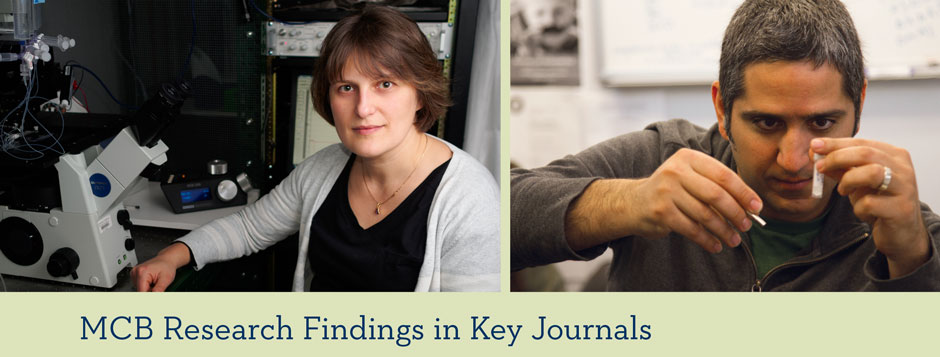
Last spring, several MCB biologists published their findings in key scientific journals. In a March issue of the journal Science, Assistant Professor Polina Lishko and her postdoc, Melissa Miller, wrote about their discovery that may lead to a unisex contraceptive. They’ve identified the switch that triggers the “power kick” that sperm use to fertilize an egg, revealing both a possible source of male infertility and a potential target for birth control. “If the sperm receptor doesn’t recognize progesterone, you would be infertile,” says Miller, the paper’s first author. Sperm employ a special whip-like tail motion to penetrate the egg, which is triggered by progesterone binding to their receptors. “The next step is to look in other tissues that express this receptor,” says senior author Lishko. “This may be a universal pathway in cells that are regulated by progesterone in a similar manner.”
Also in March, Arash Komeili, an MCB affiliate and associate professor of Plant & Microbial Biology, and his collaborators — including MCB Professors Michelle Chang and James Hurley — published in PLOS Biology about their work on how magnetic compasses form in bacteria, allowing them to navigate their environment. The colleagues discovered that most so-called magnetotactic bacteria repurpose a commonplace enzyme and use it as a scaffold on which to assemble iron atoms into tiny magnets. A key feature of building magnetic particles is a run-of-the-mill protease — an enzyme that chews up proteins for recycling — that is deactivated. “We’d like to know how minerals are built in nature, since they constitute a fundamental survival strategy for many organisms,” Komeili says.
Pictured above:
Assistant Professor Polina Lishko (left) and her postdoc
Melissa Miller have done research that may lead to a unisex contraceptive and identify a source of male infertility. Photo credit: Mark Joseph Hanson.
Associate Professor of Plant & Microbial Biology Arash Komeili (right) is studying how magnetic compasses form in bacteria. Photo credit: Jim Block.




